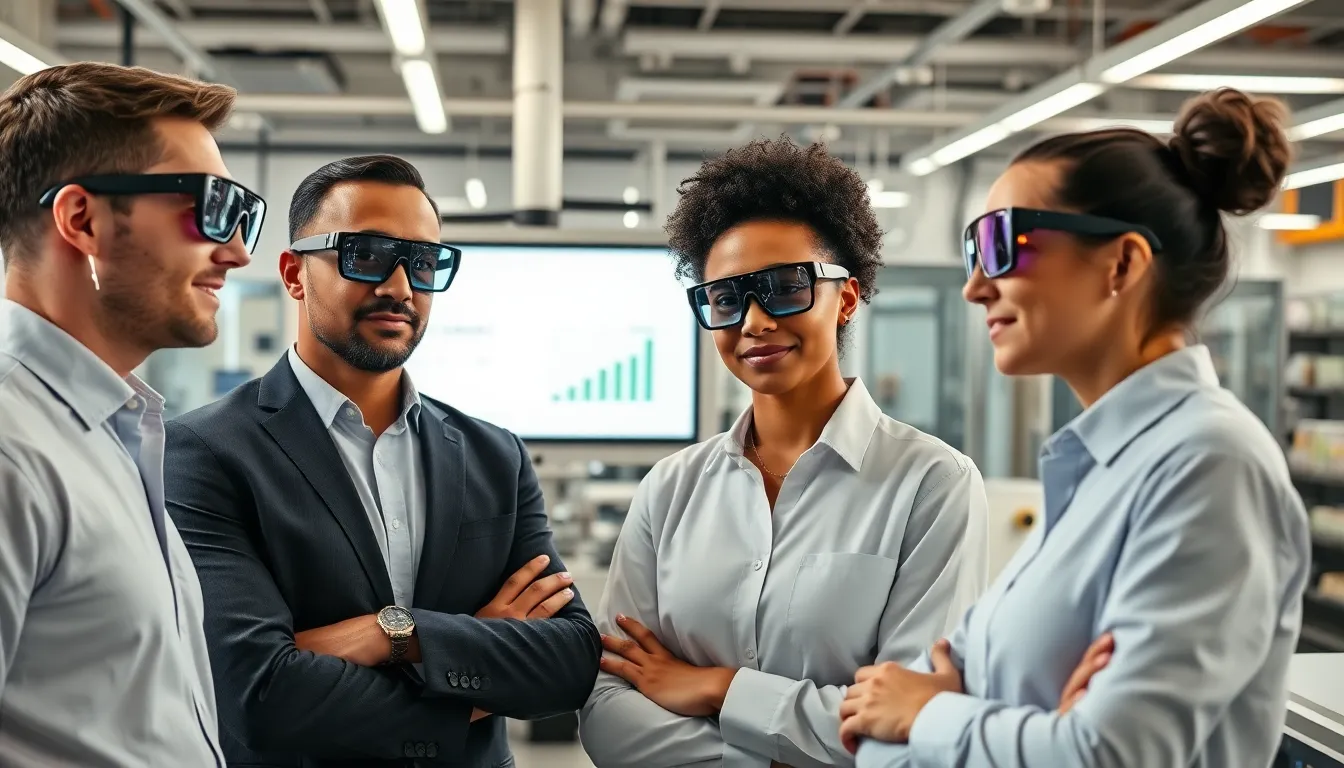Imagine walking through a pharmaceutical manufacturing plant, wearing sleek augmented reality glasses. Suddenly, vital information about the machinery, processes, and even safety protocols pops up before your eyes, seamlessly blending the physical world with a digital overlay. Not only would this enhance productivity, but it could also bring a chuckle or two when that AR assistant tries to make sense of the chaos surrounding it. Welcome to the future, where augmented reality (AR) isn’t just for gaming anymore. It’s revolutionizing the pharmaceutical manufacturing industry. Let’s jump into how this nifty technology is reshaping the landscape.
Table of Contents
ToggleUnderstanding Augmented Reality Technology

At its core, augmented reality technology overlays digital information onto the real world. Unlike virtual reality, which transports users into entirely immersive environments, AR enhances the real world by superimposing images, data, and graphics over it. This is achieved through devices like smart glasses, smartphones, and tablets. For pharmaceutical manufacturers, the potential lies in utilizing AR to streamline operations, improve training, and enhance collaboration.
AR systems use sensors, cameras, and displays to interpret the environment and add helpful digital elements. Think of it as handy guidance right where it’s needed most. The technology also capitalizes on the Internet of Things (IoT), connecting various devices for a more cohesive workflow. Together, these advancements lay the groundwork for a smarter, more efficient pharmaceutical production environment.
Applications of Augmented Reality in Pharma Manufacturing
The applications of augmented reality in pharmaceutical manufacturing are as varied as they are groundbreaking. One primary use involves training. Instead of traditional methods, new employees can benefit from AR simulations, allowing them to practice procedures in a risk-free environment. Visual cues enhance comprehension, making it easier for trainees to grasp complex processes.
Another significant application is maintenance. AR can guide technicians in real-time, offering visual schematics and step-by-step instructions tailored to their specific tasks. Imagine a technician peering through AR glasses that highlight every component needing maintenance, reducing downtime and errors.
Quality assurance is another area where AR excels. By overlaying graphical data on physical products, manufacturers can inspect quality in real-time, identifying defects that might go unnoticed. This leads to increased accuracy and compliance with stringent regulations.
Benefits of Integrating Augmented Reality
Integrating augmented reality into pharmaceutical manufacturing offers a host of benefits that go beyond glitzy technology. For starters, efficiency skyrockets. Employees can access information on the fly without needing to search through manuals or wait for instructions. This immediacy translates into faster turnaround times, boosting productivity overall.
Cost savings follow suit. With AR, there’s less room for errors, which means fewer mistakes that could lead to costly recalls or production halts. Also, training costs diminish when new hires can learn on the job with AR guidance rather than through expensive simulations or one-on-one instruction.
Also, enhanced collaboration is a significant perk. Teams can work from different locations while sharing an augmented environment, solving issues in real-time regardless of physical distance. This collaboration fosters innovation, as more minds contribute to problem-solving through a shared visual platform.
Challenges and Considerations
Even though its incredible potential, the integration of augmented reality into pharmaceutical manufacturing does come with challenges. One major concern revolves around cost. While the technology has become more accessible, initial investments in AR infrastructure can still be hefty for some companies.
Another challenge is the training of employees. Although AR can simplify training, the technology itself requires users to be somewhat tech-savvy. Change management becomes essential, ensuring that all employees are comfortable with the new systems in place. Also, data security is a top concern. As AR devices often connect to a network, safeguarding sensitive information must be prioritized to prevent potential breaches.
Future Trends in Augmented Reality for Pharma
The future of augmented reality in pharmaceutical manufacturing looks bright. Trends point towards increased reliance on artificial intelligence (AI) to enhance AR applications further. AI can analyze vast amounts of data in real-time, providing actionable insights that AR glasses can then relay to users on the floor.
Another trend is the adoption of more immersive experiences. As technology evolves, AR glasses are expected to become lighter, more comfortable, and feature longer battery life. This will enhance usability, making it more common for employees to rely on them throughout their shifts.
Besides, there’s a push towards customization. AR solutions tailored to specific manufacturing processes will likely become the norm, offering functionalities designed to cater to individual company needs. This personalized approach helps manufacturers maximize efficiency and minimize risks.


